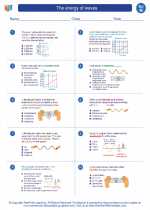Asexual Reproduction
Asexual reproduction is a type of reproduction that involves only one parent and does not involve the fusion of gametes. It produces offspring that are genetically identical to the parent.
Methods of Asexual Reproduction
There are several methods of asexual reproduction:
- Budding: A new organism develops from an outgrowth or bud on the parent.
- Fission: The parent organism splits into two or more individuals of equal size.
- Regeneration: The ability of an organism to regrow lost body parts.
- Fragmentation: The body of the parent organism is broken into distinct pieces, each of which can grow into a new organism.
- Parthenogenesis: Development of an embryo from an unfertilized egg.
Advantages and Disadvantages of Asexual Reproduction
Asexual reproduction has its own set of advantages and disadvantages:
Advantages
- Efficient in terms of time and energy since only one parent is involved.
- Allows for rapid population growth in favorable conditions.
Disadvantages
- Results in less genetic variation, which can make the population more susceptible to diseases and environmental changes.
- Does not allow for adaptation to changing environmental conditions.
Examples of Asexual Reproduction
There are numerous examples of organisms that reproduce asexually, including:
- Bacteria (binary fission)
- Yeast (budding)
- Hydra (budding)
- Starfish (regeneration)
- Flatworms (fragmentation)
- Honeybees (parthenogenesis)
Study Tips for Asexual Reproduction
To effectively study asexual reproduction, consider the following tips:
- Understand the different methods of asexual reproduction and be able to provide examples of each.
- Compare and contrast the advantages and disadvantages of asexual reproduction with those of sexual reproduction.
- Explore the evolutionary implications of asexual reproduction in terms of genetic diversity and adaptation.






